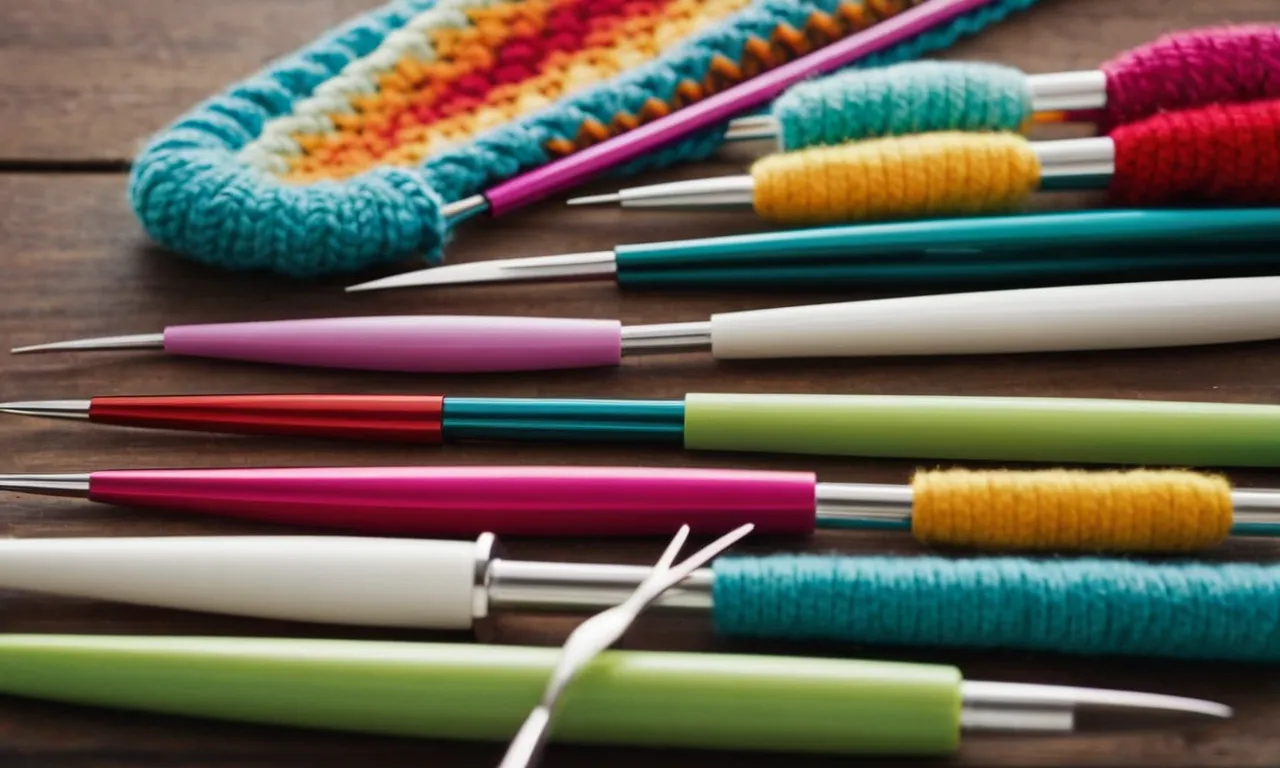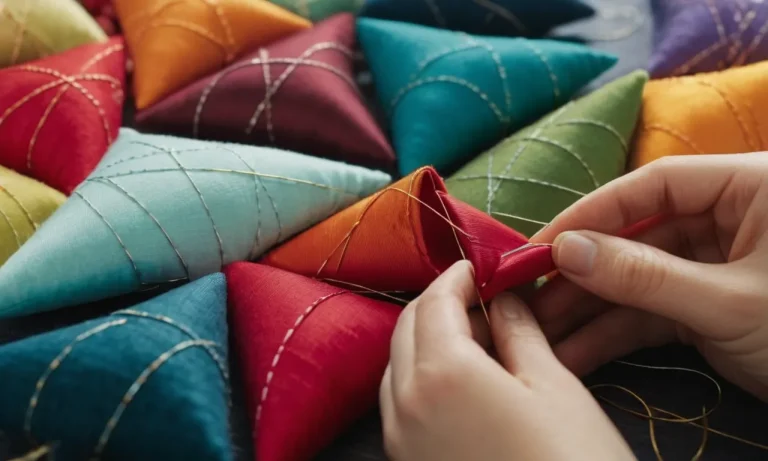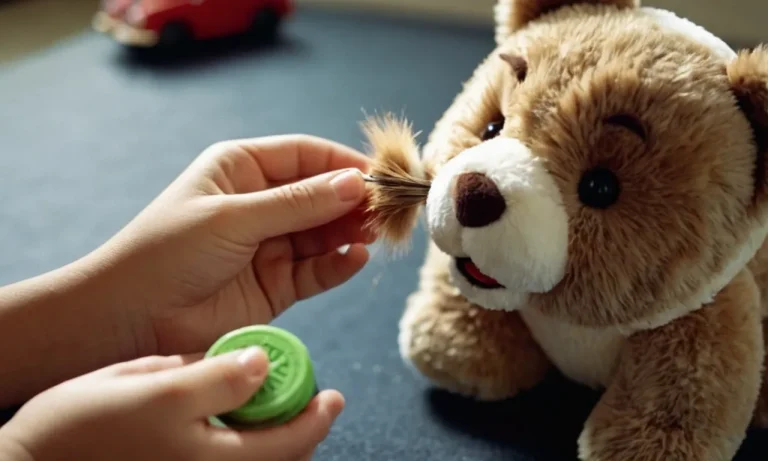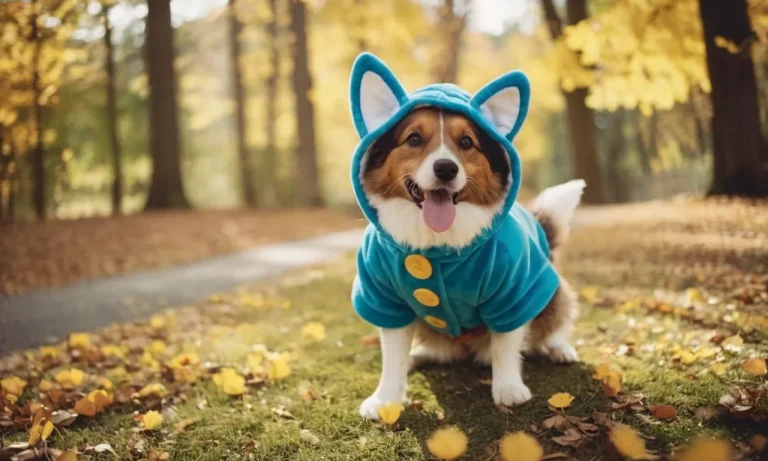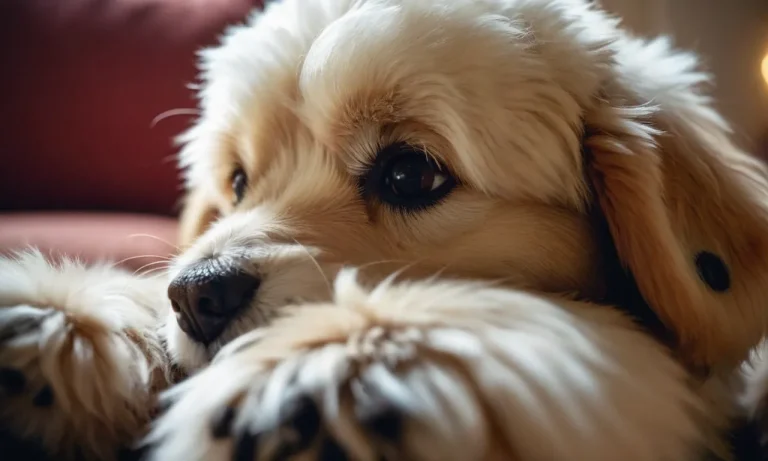When making stuffed animals with crochet, having the right size hook makes all the difference for getting the gauge and firmness you want. If you choose a hook that is too small, your stitches will be tight and the fabric stiff which can limit stretch and stuffing capacity.
On the other hand, too large of a hook produces a fabric too loose which creates holes and lacks form for stuffing. So what is the ideal crochet hook size for stuffed animals? Read on as we cover how to choose the best crochet hook for all your amigurumi projects.
Recommended Crochet Hook Sizes for Stuffed Animals
Size F/3.75 mm or G/4 mm for most patterns
For basic stuffed animal patterns like bears, dogs, cats, etc. a size F/3.75 mm or G/4 mm crochet hook tends to work well and is commonly called for (The Spruce Crafts). The moderately small hook size creates a tight enough gauge so the stuffing doesn’t show through the stitches, but not so tight that it becomes difficult to work the stitches.
This allows you to crochet nice and smoothly while producing a toy that is well constructed and holds its shape nicely when stuffed.
Larger hooks for bigger projects
If making a larger stuffed animal, like a 3 foot teddy bear for example, choosing a hook 1 size bigger like an H/5 mm can save time and effort over having to crochet hundreds of rows with a smaller hook.
The slightly looser gauge won’t compromise structure much on a big toy, and you’ll still get great coverage over the stuffing. Big mega yarn projects may even call for enormous hooks like a Q or S for super fast stitching.
Small hooks for tiny toys
On the other hand, when crocheting tiny stuffed animals under 3 inches tall, a hook around size D/3 mm or smaller will be required to get a tight enough gauge with slender yarn (amigurumi for example).
Those very little hooks allow for excellent control over each delicate stitch, and let you sculpt wee stuffed creatures with surprisingly lifelike detail and personality!
| Project Size | Recommended Crochet Hook Size |
|---|---|
| Small (under 3″) | D/3 mm or smaller |
| Medium (3″ – 16″) | F/3.75 mm or G/4 mm |
| Large (over 16″) | H/5 mm or bigger |
How to Determine Ideal Crochet Hook Size
Selecting the right crochet hook size is crucial when making stuffed animals to achieve the perfect gauge and get the right stiffness and drape for your project. Here are some useful tips on determining the best hook size:
Check the Yarn Label
Most yarn labels recommend hook sizes to use with that particular yarn weight and fiber. This is the best starting point, though you may need to adjust up or down once you start crocheting your swatch or project.
Crochet a Gauge Swatch
Crocheting a 4-inch square gauge swatch with your chosen yarn and an average hook size is extremely helpful. Measure it carefully and compare to pattern gauge. If your swatch is too small, go up a hook size. If too big, go down a size. This will give you the right density.
Consider the Stuffing
The amount and type of stuffing can impact your fabric structure. Understuffed pieces may stretch and distort. Overstuffed ones can become too stiff and tightly packed. Factor in stuffing firmness as you test hook sizes.
Think About the Details
| For smaller details: | Use smaller hooks like steel hooks for tiny amigurumi features |
| For larger pieces: | Scale up hook sizes accordingly for bigger toy parts like bodies |
Finding the sweet spot between hook size, yarn weight, and stuffing amount takes some trial and error. But taking the time to experiment will ensure your homemade stuffed animals have the perfect finished texture.
Check out these useful tutorials for more tips:
Tips for Getting Gauge Right with Different Yarns
Getting the right gauge is crucial when making crochet stuffed animals. Gauge refers to the number of stitches and rows in a swatch of your crochet, and matching gauge ensures your finished pieces come out the perfect size.
When working with different yarns, you’ll need to adjust your crochet hook size to maintain gauge.
Account for Fiber and Ply
The fiber and ply of a yarn impacts gauge. Fiber refers to what the yarn is made of, like wool, cotton, or acrylic. Ply refers to how many strands are twisted together to create the yarn.
In general:
- Animal fibers like wool have more stretch and flexibility, requiring fewer stitches for the same gauge.
- Plant fibers like cotton have less stretch, requiring more stitches.
- Synthetic fibers like acrylic fall somewhere in between.
- Yarns with more plies take up more space between stitches, requiring a larger hook.
Check Recommended Gauge
Most yarn labels provide a recommended gauge achieved with a specified hook size. This is a useful starting point. Even so, crochet tension varies by individual. To match gauge:
- Swatch with the recommended hook and check your stitch/row count per inch against the recommendation.
- If your swatch is too small, size up your hook. If too large, size down.
- Swatch again with each hook adjustment until your gauge matches.
Swatch with Project Yarn
Don’t rely on gauge from other projects. Always swatch with the exact yarn you intend to use. Substituting “close enough” yarns can alter gauge too much. Take the time to check gauge properly for each new stuffed animal:
- Use the actual yarn and recommended hook from the pattern or yarn label.
- Crochet a 4″ square swatch until rows look even and consistent.
- Lay swatch flat without stretching and arrange stitches straight.
- Count stitches across one 4″ section and rows down one 4″ section.
- Compare your counts to the recommendation, adjusting hook as needed.
Don’t skimp on swatching. An accurate gauge helps stuffed animals come out looking huggable as intended 🥰
Achieving Desired Firmness and Drape
When crocheting stuffed animals, achieving the right balance of firmness and drape is key to creating a cuddly and huggable toy. The size of crochet hook you use will have a big impact on the stuffed animal’s texture.
Smaller Hooks for Firmer Stuffed Animals
If you want your stuffed animal to have a very firm, dense texture that stands up well even when not stuffed, use a smaller crochet hook size relative to the yarn weight. For example:
- Sport weight yarn: Use a size D/3 or E/4 hook
- Worsted weight yarn: Use a size F/5 or G/6 hook
- Chunky weight yarn: Use a size H/8 hook
The tighter stitch created with a small hook will result in a very solid, durable fabric that is less prone to stretching out of shape. This prevents stuffing from poking through gaps over time. The downside is that it won’t drape as nicely or feel as pleasantly squishy for cuddling.
Larger Hooks for Better Drape
If you want maximum softness and squishiness with beautiful drape, use a larger crochet hook, such as:
- Sport weight yarn: Size G/6 or 7/H hook
- Worsted weight yarn: Size H/8 or I/9 hook
- Chunky weight yarn: Size I/9 or J/10 hook
The looser stitch creates a light, airy fabric that is floppy and malleable—perfect for making extra cuddly stuffed animals. The downside is that stretching can occur over time, allowing stuffing to show through. Reinforcing seams well is important.
Striking a Balance
For the best of both worlds, choose a hook 1 or 2 sizes smaller than the yarn label calls for. This will create a fabric that is relatively tight and firm, yet still soft and drapey. For example:
- Sport weight yarn: Size F/5 hook
- Worsted weight yarn: Size G/6 or H/8 hook
- Chunky weight yarn: Size H/8 or I/9 hook
You can also intentionally vary hook sizes within one project, using tighter stitches on the bottom and looser stitches on top for better drape where it counts. Experiment to get the texture just right!
No matter what hook size you choose, be sure to frequently check your gauge and adjust hooks as needed to obtain your desired fabric characteristics. With the right hooks and some practice, you’ll be creating adorable stuffed critters in no time!
Crochet Stitches for Stuffed Toys
When making crochet stuffed toys like amigurumi, choosing the right stitches is key to creating a toy that is both cute and durable. The type of yarn and hook size also play an important role. This guide covers the best crochet stitches for stuffed animals based on different factors.
Basic Stitches
The most common stitches used for amigurumi and stuffed toys are:
- Single crochet (sc)
- Half double crochet (hdc)
- Double crochet (dc)
These basic stitches work up quickly and produce a tight, dense fabric that fills out well when stuffed.
Single crochet is usually the go-to for the main body of small amigurumi.
Specialty Stitches
In addition to basic stitches, some specialty crochet stitches add interesting texture and dimension when making stuffed toys:
- Back loop single crochet – works up similarly to regular single crochet but adds visible vertical stripes
- Front/back post double crochet – creates ribbed or braided texture
- Puff stitch – forms a 3D puff for added whimsy
Use specialty stitches strategically for accents, textures, or sections needing more stability like arms and legs.
Stitch Tightness
For the best results with crochet stuffed animals:
- Work stitches tightly so the filling doesn’t show through gaps
- Use a hook at least 1 to 2 sizes smaller than the yarn would normally call for
- Stuff well as you go so stitches don’t loosen up
Following these tips creates a durable stuffed animal that holds its shape after many years of love.
| Yarn Weight | Recommended Hook Size |
|---|---|
| Super Fine (#0) | 1.75mm – 2.25mm |
| Fine (#1) | 2.25mm – 3mm |
| Light (#2) | 2.75mm – 3.5mm |
| Medium (#3) | 3.5mm – 4mm |
| Bulky (#4) | 5mm – 6mm |
This hook size chart offers suggestions on getting gauge tight enough for well-filled amigurumi and stuffed animals.
Fiber Content
Look for yarns made with:
- Cotton – durable, holds shape well
- Acrylic – budget-friendly, soft
- Wool – warmth, texture
- Bamboo – very soft, sustainable
Stay away from 100% mohair or other fluffy yarns as those fibers don’t hold stuffed shapes.
With the right stitches, yarn, and hook, you’ll be hooked on crocheting cuddly stuffed animals and toys in no time. Check out this website for more tips and patterns!
Conclusion
With some gauge swatching and attention to hook sizing guidelines, you can discover the right crochet hook match for any stuffed animal pattern and yarn. Well-constructed amigurumi start from the ground up with hooks that create a fabric suited for stuffing and durability.
Now that you know key factors in selecting hooks, you can hook up adorable crochet critters suited for endless affection and play.

